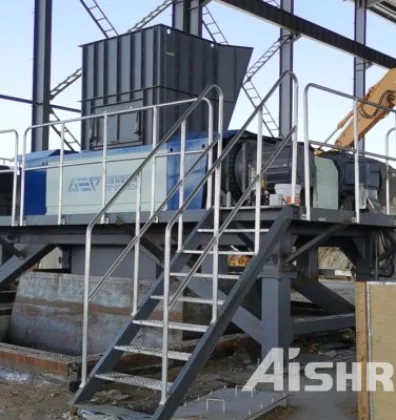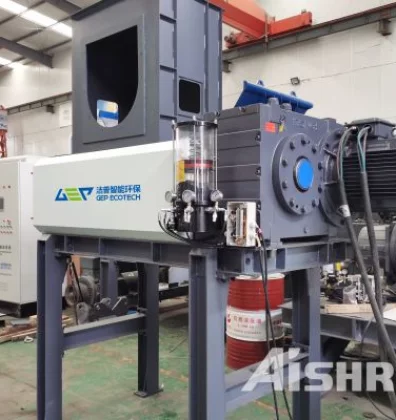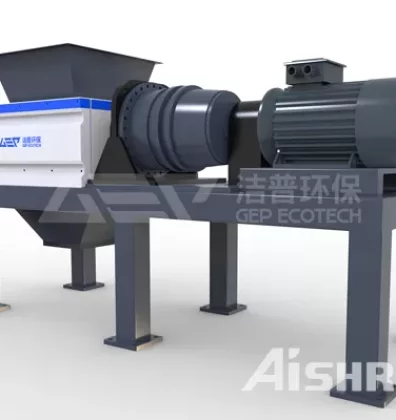Municipal Solid Waste (MSW) contains organic as well as inorganic matter. The latent energy present in its organic fraction can be recovered for gainful utilisation through adoption of suitable Waste Processing and Treatment technologies. The recovery of energy from wastes also offers a few additional benefits as follows:
- The total quantity of waste gets reduced by nearly 60% to over 90%, depending upon the waste composition and the adopted technology
- Demand for land, which is already scarce in cities, for landfilling is reduced
- The cost of transportation of waste to far-away landfill sites also gets reduced proportionately
- Net reduction in environmental pollution
Energy can be recovered from the organic fraction of waste (biodegradable as well as non-biodegradable) basically through two methods as follows:
- Thermo-chemical conversion: This process entails thermal de-composition of organic matter to produce either heat energy or fuel oil or gas;
- Bio-chemical conversion: This process is based on enzymatic decomposition of organic matter by microbial action to produce methane gas or alcohol.
The Thermo-chemical conversion processes are useful for wastes containing high percentage of organic non-biodegradable matter and low moisture content. The main technological options under this category include Incineration and Pyrolysis/ Gasification. The bio-chemical conversion processes, on the other hand, are preferred for wastes having high percentage of organic bio-degradable (putrescible) matter and high level of moisture/ water content, which aids microbial activity. The main technological options under this category is Anaerobic Digestion, also referred to as Biomethanation.
There are various technological options which can be employed for recovery of energy from MSW. While some of these have already been applied at a large scale, some others are under advanced stages of development. A brief on these technologies is given below.
Anaerobic Digestion
In this process, also referred to as bio-methanation, the organic fraction of wastes is segregated and fed to a closed container (biogas digester) where, under anaerobic conditions, the organic wastes undergo bio-degradation producing methane-rich biogas and effluent/ sludge. The biogas production ranges from 50- 150m3 /tonne of wastes, depending upon the composition of waste. The biogas can be utilised either for cooking/ heating applications, or through dual fuel or gas engines or gas / steam turbines for generating motive power or electricity. The sludge from anaerobic digestion, after stabilisation, can be used as a soil conditioner, or even sold as manure depending upon its composition, which is determined mainly by the composition of the input waste.
Fundamentally, the anaerobic digestion process can be divided into three stages with three distinct physiological groups of micro-organisms:
- Stage I: It involves the fermentative bacteria, which include anaerobic and facultative micro-organisms. Complex organic materials, carbohydrates, proteins and lipids are hydrolyzed and fermented into fatty acids, alcohol, carbon dioxide, hydrogen, ammonia and sulfides.
- Stage II: In this stage the acetogenic bacteria consume these primary products and produce hydrogen, carbon dioxide and acetic acid.
- Stage III: It utilizes two distinct types of methanogenic bacteria. The first reduces carbon dioxide to methane, and the second decarboxylates acetic acid to methane and carbon dioxide.
Main Steps in Anaerobic Treatment of MSW
- Pre-treatment: to remove inerts and non-biodegradable materials, upgrade and homogenise the feedstock for digestion and to promote downstream treatment processes.
- Anaerobic Digestion: and to produce biogas for energy to de-odorise, stabilise and disinfect the feedstock.
- Post-Treatment: to complete the stabilisation of the digested material and to produce a refined product of suitable moisture content, particle size and physical structure for the proposed end-use as organic manure.
- Effluent Treatment: to treat the liquid effluent to specified standards before final disposal.
Landfill Gas Recovery
The waste deposited in a landfill gets subjected, over a period of time, to anaerobic conditions and its organic fraction gets slowly volatilized and decomposed according to the process similar to that taking place in an Anaerobic Digestion system as detailed in the previous section. This leads to production of landfill gas containing about 45-55% methane, which can be recovered through a network of gas collection pipes and utilised as a source of energy.
Typically, production of landfill gas starts within a few months after disposal of the wastes and generally lasts for about ten years or even more depending upon mainly the composition of wastes and availability / distribution of moisture. The yearly gas production rates observed in full size sanitary Landfills range from 5-40 litre/kilogram.
This gas can be recovered through an active system of vertical or horizontal wells, which are drilled into the waste where methane is being produced. Vertical wells are the most common type used and are located at the rate of about two wells per acre. The wells normally consist of perforated High Density Poly Ethylene or Poly Vinyl Chloride pipes of 50 to 300mm diameter surrounded by 300mm thickness of 25-35 mm size gravel. The gas wells are provided at the time offilling of the landfill. The wells are connected by a main collection Header and the gas is pumped out under negative pressure by a blower. The gas is passed through a moisture trap, gas cleaning unit, (containing activated alumina, silica gel or molecular sieves) a flame arrester, a non-return valve and gate value before its connection to the compressor. Usually several gas wells are connected to a blower, though pumping from all the wells is not carried out simultaneously. A flare (open / enclosed flame) is provided to burn the gas when it can not be used.
Incineration
It is the process of direct burning of wastes in the presence of excess air (oxygen) at temperatures of about 8000C and above, liberating heat energy, inert gases and ash. Net energy yield depends upon the density and composition of the waste; relative percentage of moisture and inert materials, which add to the heat loss; ignition temperature; size and shape of the constituents; design of the combustion system (fixed bed/ fluidised bed ), etc. In practice, about 65 to 80 % of the energy content of the organic matter can be recovered as heat energy, which can be utilised either for direct thermal applications, or for producing power via steam turbinegenerators (with typical conversion efficiency of about 30%).
The combustion temperatures of conventional incinerators fuelled only by wastes are about 760℃ in the furnace, , and in excess of 870℃ in the secondary combustion chamber. These temperatures are needed to avoid odour from incomplete combustion but are insufficient to burn or even melt glass. To avoid the deficiencies of conventional incinerators, some modern incinerators utilise higher temperatures of up to 1650℃ using supplementary fuel. These reduce waste volume by 97% and convert metal and glass to ash.
Wastes burned solely for volume reduction may not need any auxiliary fuel except for start-up. When the objective is steam production, supplementary fuel may have to be used with the pulverized refuse, because of the variable energy content of the waste or in the event that the quantity of waste available is insufficient.
Basic Types of Incineration Plants
Some basic types of Incineration Plants operating in the developed countries are as follows:
Mass Burn
About three-fourths of the waste-to-energy facilities in the U.S. and a few other countries are ‘mass burn’, where refuse is burned just as it is delivered to the plant, without processing or separation. These plants are sized to incinerate up to 3,000 tons of refuse per day and use two or more burners in a single plant. While facilities are sized according to the expected volume of waste, they are actually limited by the amount of heat produced when the garbage is burned. For example, if garbage burns hotter than it is expected to, less volume of material can be incinerated. Some mass burn plants remove metals from the ash for recycling. Mass burn plants have operated successfully in Europe for more than 100 years. A
Modular Combustion Units
Modular incinerators are simply small ‘mass burn’ plants with capacity ranging from 25 to 300 tonnes per day. The boilers are built in a factory and shipped to the plant site, rather than being erected on the site, as is the case with larger plants. These facilities are often used in small communities.
Refuse-Derived Fuel (RDF) based Power Plants
In an RDF plant, waste is processed before burning. Typically, the noncombustible items are removed, separating glass and metals for recycling.
The combustible waste is shredded into a smaller, more uniform particle size for burning. The RDF thus produced may be burned in boilers on-site, or it may be shipped to off-site boilers for energy conversion. If the RDF is to be used off-site, it is usually densified into pellets through the process of pelletisation.
Pelletisation involves segregation of the incoming waste into high and low calorific value materials and shredding them separately, to nearly uniform size. The different heaps of the shredded waste are then mixed together in suitable proportion and then solidified to produce RDF pellets. The calorific value of RDF pellets can be around 4000 kcal/ kg depending upon the percentage of organic matter in the waste, additives and binder materials used in the process, if any. Since pelletisation enriches the organic content of the waste through removal of inorganic materials and moisture, it can be very effective method for preparing an enriched fuel feed for other thermo-chemical processes like Pyrolysis/ Gasification, apart from Incineration. Additional advantage is that the pellets can be conveniently stored and transported.
RDF plants involve significantly more sorting and handling than Mass Burn facilities and therefore provide greater opportunity to remove environmentally harmful materials from the incoming waste prior to combustion. However, it is not possible to remove the harmful materials completely. In the past, RDF was used mainly along with coal fired boilers but now, because of the stricter restrictions air emissions, it is usually burned in dedicated boilers designed and built specially for the RDF. In case of RDF Pellets too, it needs to be ensured that the pellets are not burned indiscriminately or in the open, but only in dedicated Incineration facilities or other well designed combustion systems.
Pyrolysis/ Gasification
Pyrolysis is also refered to as destructive distillation or carbonization. It is the process of thermal decomposition of organic matter at high temperature (about 9000C) in an inert (oxygen deficient) atmosphere or vacuum, producing a mixture of combustible Carbon Monoxide, Methane, Hydrogen, Ethane [CO, CH4, H2, C2H6] and non-combustible Carbon Dioxide, water, Nitrogen [CO2, H2O, N2] gases, pyroligenous liquid, chemicals and charcoal. The pyroligenous liquid has high heat value and is a feasible substitute of industrial fuel oil. Amount of each end-product depends on the chemical composition of the organic matter and operating conditions. Quantity and chemical composition of each product changes with pyrolysis temperature, residence time, pressure, feed stock and other variables.
Gasification involves thermal decomposition of organic matter at high temperatures in presence of limited amounts of air/ oxygen, producing mainly a mixture of combustible and non-combustible gas (carbon Monoxide, Hydrogen and Carbon Dioxide). This process is similar to Pyrolysis, involving some secondary/ different high temperature (>1000oC) chemistry which improves the heating value of gaseous output and increases the gaseous yield (mainly combustible gases CO+H2) and lesser quantity of other residues. The gas can be cooled, cleaned and then utilized in IC engines to generate electricity.
Pyrolysis/ Gasification is already a proven method for homogenous organic matter like wood, pulp etc. and is now being recognised as an attractive option for MSW also. In these processes, besides net energy recovery, proper destruction of the waste is also ensured. The products are easy to store and handle. These processes are therefore being increasingly favoured in place of incineration.
Basic Types of Pyrolysis/ Gasification Systems
The salient features of different types of Pyrolysis/ Gasification Systems so far developed are given below.
Flash Pyrolysis Process
The solid waste is initially coarse shredded to less than 50mm size, air classified to separate organics / inerts and dried through an air drier. The organic portion is then screened, passed through a hammer mill to reduce the particle size to less than 3mm and then pyrolysed in a reactor at atmospheric pressure. The proprietary heat exchange system enables pyrolytic conversion of the solid waste to a viscous oil at 500℃.
Destrugas Gasification System
In this system the raw solid waste is first subjected to shredding / size reduction in an enclosed shed. The air from this shed is taken up as intake air in the plant so as to avoid odour problems. The shredded waste is fed to retorts (heated indirectly by burning gas in a chamber enveloping it) through which it sinks under gravity and gets subjected to thermal decomposition. The produced gas is washed and most of it (85%) used for heating the retorts. The remaining 15% is available as fuel. The slag consists of mostly char.
GEP ECOTECH offers Waste-to-energy projects pretreatment machines and plants.




